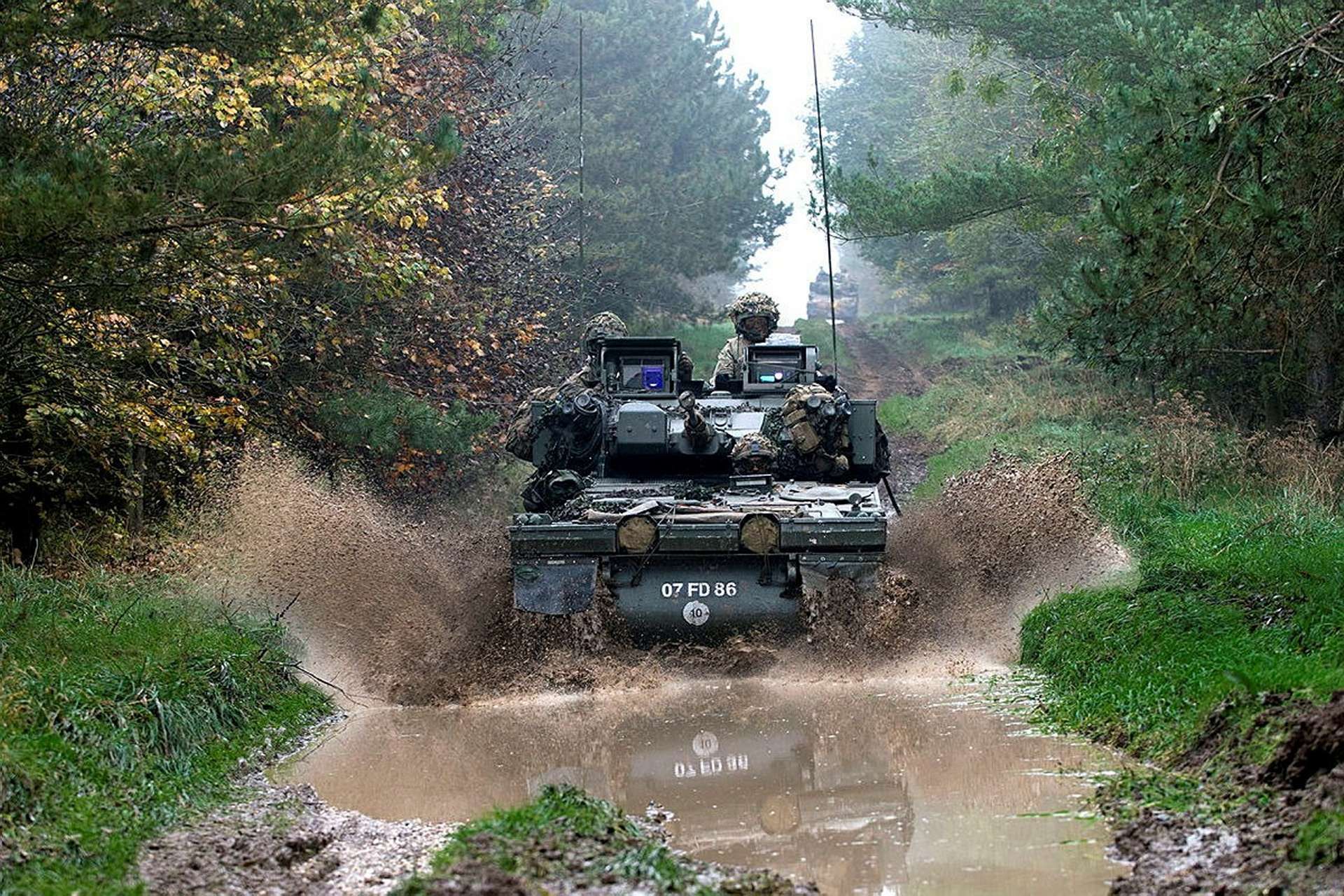Breaking news
UK Defense Ministry Confirms Decommissioning and Sale of FV107 Scimitar and Warrior Vehicles.
On May 10, 2024, the UK Ministry of Defence confirmed the decommissioning of the FV107 Scimitar and Warrior armored vehicles, signaling the end of their operational lifecycle within the British Army, as reported by the UK Defence Journal. The FV107 Scimitars are being progressively replaced by the new Ajax vehicles, while the Warrior vehicles are to be replaced by the Boxer armored vehicles. Additionally, the decommissioned vehicles are slated to be sold, transitioning from frontline service to new roles through sales.
Follow Army Recognition on Google News at this link

Pictured are soldiers from C Sqn Household Cavalry Regiment and their Scimitar Vehicle driving into standing water during Exercise IRON SCOUT 3 (Picture source: UK MoD)
Labour MP for Norwich South, Clive Lewis, inquired this week about the status of the FV107 Scimitar armored vehicles. In response, on May 10, James Cartlidge, Minister of State for Defence, detailed that the 97 FV107 Scimitar platforms, part of a total of 114 Combat Vehicle Reconnaissance (Tracked) units, were all withdrawn from active service and are in the process of being decommissioned. The Scimitars, retired in 2023, are gradually being replaced by the new Ajax vehicles.
The FV107 Scimitar is a reconnaissance armored vehicle from the Combat Vehicle Reconnaissance (Tracked) series designed by the UK. Introduced in the 1970s, the Scimitar is equipped with a high-velocity 30 mm cannon, making it effective for armed reconnaissance. Its light armor and high mobility due to its tracks have led to widespread use by the British Army in various global conflicts.
The Ajax vehicle, meanwhile, is a more modern and advanced reconnaissance vehicle project, intended to replace the CVR(T) series such as the Scimitar. Production of the Ajax began in 2017, with service entry initially planned for 2019 but delayed. The Ajax is designed to offer better protection and increased firepower, equipped with a 40 mm cannon, advanced electronic architecture, and superior battlefield survivability through enhanced armor and sophisticated threat detection systems. The goal of the Ajax is to significantly improve reconnaissance capabilities while better protecting crews during modern operations.
Additionally, MP Lewis also inquired about the status of the Warrior infantry fighting vehicles. Minister Cartlidge revealed that the British Army currently has 632 Warrior vehicles, with 80 awaiting decommissioning. A total of nine more vehicles will also be subject to this measure during the fiscal year 2024-25. This decision is part of the fleet reductions planned in the Integrated Review of 2021.
It is important to note that the British Army had previously attempted to modernize the Warrior vehicles through the Warrior Capability Sustainment Programme (WCSP). This program aimed to equip 245 vehicles with a new turret and weapons system, thus extending their service life until 2040. However, despite an investment of over £430 million, the project faced budget constraints and delays and had not reach the service phase by March 2020. In March 2021, the Ministry of Defence definitively canceled the WCSP, opting instead to replace the Warrior vehicles with the new Boxer armored vehicles by the middle of the decade.
The Warrior infantry fighting vehicles are a family of armored vehicles developed by the UK, with production starting in 1984 and entering service in 1987. Primarily designed to transport troops while providing direct fire support through its 30 mm automatic cannon and coaxial machine gun, the Warrior combines mobility, protection, and firepower. This vehicle was designed to operate at the frontline of battlefields, capable of transporting up to seven soldiers in addition to the crew, and can operate in a variety of combat environments.
The Boxer is a modular armored vehicle developed jointly by Germany and the Netherlands, with production starting in the early 2000s. The Boxer entered active service in 2005, distinguished by its modular design that allows rapid module changes for different missions, such as troop transport, field ambulance, command post, or logistical support. This versatility makes the Boxer a platform adaptable to a wide range of military operations.
The vehicle is heavily armored, providing advanced protection against mines, improvised explosive devices, and ballistic attacks, making it particularly suitable for modern operational theaters and hostile environments. It is also equipped with an innovative propulsion system that allows the driving section and mission module to operate semi-independently, thereby enhancing its mobility and flexibility on the field.


























